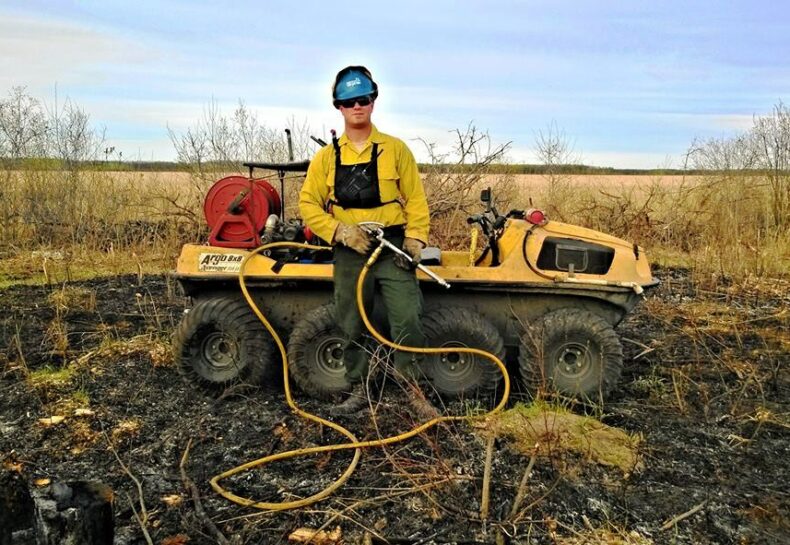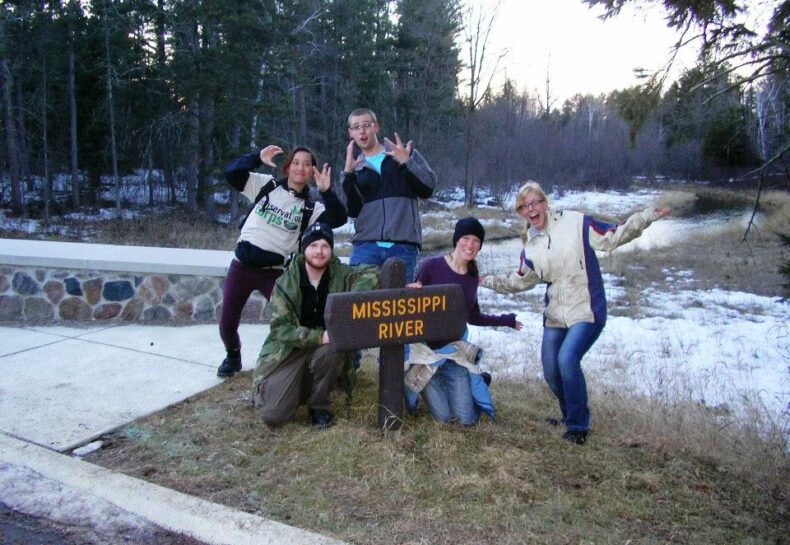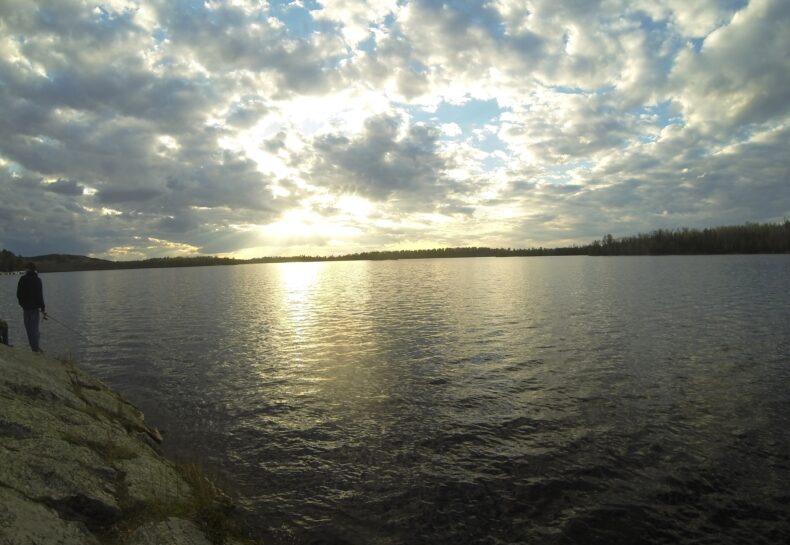Member Stories
“Tree Train!”
After what seemed to be a never-ending winter with dangerously cold temperatures and lots of snow, any sign of spring was more than welcome. Like many people, I associate spring with trees budding out and showing off their leaves. At the nursery, this sign of spring signals the start of spring harvest and planting season. Before anything can go in the ground, additional large bare root trees and shrubs have to be harvested to supplement those harvested in the past fall harvest season. The process is made very efficient through the use of one of my favorite pieces of machinery: the crawler. It has the ability to prune roots of trees and shrubs and shake off the excess dirt while two people stand on the platforms and hoist them out of the soil to pass onto the runners going back and forth to the delivery truck. Read More
Fire in North West
Some of the work we do involves wildland fire. Conservation Corps members not only help firefighters with wildfire suppression, but also help natural resource managers with prescribed burns. Part of our training includes the completion of a week-long course for an Incident Qualification Card, or Red Card. The Red Card is a certification given by the Minnesota DNR that qualifies individuals to work with fire at federal, state, county, and local agency levels.Corps members most often help with wildland fire ‘mop up,’ which is the work done after flames have been extinguished and the fire is no longer running. In the burned or ‘black’ area, firefighter doing mop up put out smoldering material and clear logs, brush, and other fuels from the edge of the burned area to prevent the fire from reigniting. Mopping up after the fire has been controlled has been my experience with wildfire as part of the North Woods crew. Read More
Laughing, joking and living it up
When you run into our crew in the woods, we are running chainsaws. We are dirty and rundown. Our muscles bulge and our faces sweat.When you run into our crew on the prairie, we are lighting fires. We are tired and covered in soot. We are carrying heavy packs and flaming torches.When you run into our crew anywhere, we are working and working hard. We are young and strong. We’re the Ottertail Crew, at your service!Sometimes, I think I love the Corps because it gives us a chance to be the people that hide in the corners of our collective childhood: the lumberjacks and firefighters, the mothers and fathers that everyone is excited to see on career day. I’ve become the adult I wanted to be, and I am cool.Then reality hits: it’s windy and raining, or it’s eighty five degrees at 10 a.m., or a saw quits on the first day of a project and I’m stuck pretending to be a mechanic. I lose track of the glamor and put my nose to the grindstone. And then we’re all grinding away, distracted and perhaps worlds away from each other in a 10 foot space. What happened? Read More
A forest person
Have you ever been around a kid at age 3 or 4? At a certain point around this age, any vocabulary they’ve developed is completely lost and replaced with two questions: “What’s that?” and “Why?”. Those kids are my role models. Heck, to any co-workers who’ve demonstrated any bit of knowledge about anything in the forest, prairies, skies, or waters, I am one of those kids. Sorry about that, but thank you!I’ve been alive for a while. But really, 2013 was my first year alive, at least in terms of being a “forest person”. For an entire year, I spent 40+ hours among the trees and grasses and forbs of Minnesota, looking at things, hearing things, and feeling things. I learned that there are trees, plants, birds, bugs, and weather and among each of those exist many different kinds. With four seasons under my belt, I became a “forest toddler” and I decided to do it all again. Just like that kid, I want to know what kind of tree that is, and why it’s there. What kind of bird is laughing at me while I swat mosquitoes frantically? What’s that plant? And that one? And that one? When will it flower? What is that caterpillar going to turn into and which one of these plants is making me so itchy? (Poison ivy is so great! It’s like finally reaching that spot on your back and scratching, except you can get it in easily reachable places and itch that baby whenever you want! Anyway…..) Read More
Building resilience
What do you do when you can identify problems, but cannot seem to find resolutions? I often find myself obsessing over potential solutions for the myriad problems I am addressed with and become overwhelmed. When working with vulnerable populations, it seems there is always a fire to put out or a struggle to overcome. I have had to work pretty closely with people in difficult situations, and often I find I do not have answers for them. All I can do is help them find resources who may be able to find the solutions I can't. This is difficult for me because I would truly love to fix everyone’s problems, but the scope of problems to be solved is far beyond my ability alone. Hope and optimism are my greatest tools in addressing these everyday struggles. Read More
Stump
I happened across a stump. A whiskey barrel in diameter it was dark, crusted with pale green lichens and weathered with age. Had it not been my objective to displace this stump I would have thought it a stoical protrusion from the black lowland soil. Its existence an open rebellion against the human condition that drives our species to alter the natural state of affairs in his domain.It was however, my duty to the state of Minnesota to remove this particular stump for the preservation of the scenic North Country Trail. A trail which is so sacred that its path can only be altered by an act of God or United States Congress. I wouldn’t hold my breath for either. Consequently, by placing itself in the center of the trail, this stump’s blatant disregard for federal decree was a slap in the face to me and frankly the American people. It was a recalcitrant old boor whose presence could only result in serious injury and certain death to the blind and peg-legged hikers of the trail. Read More




